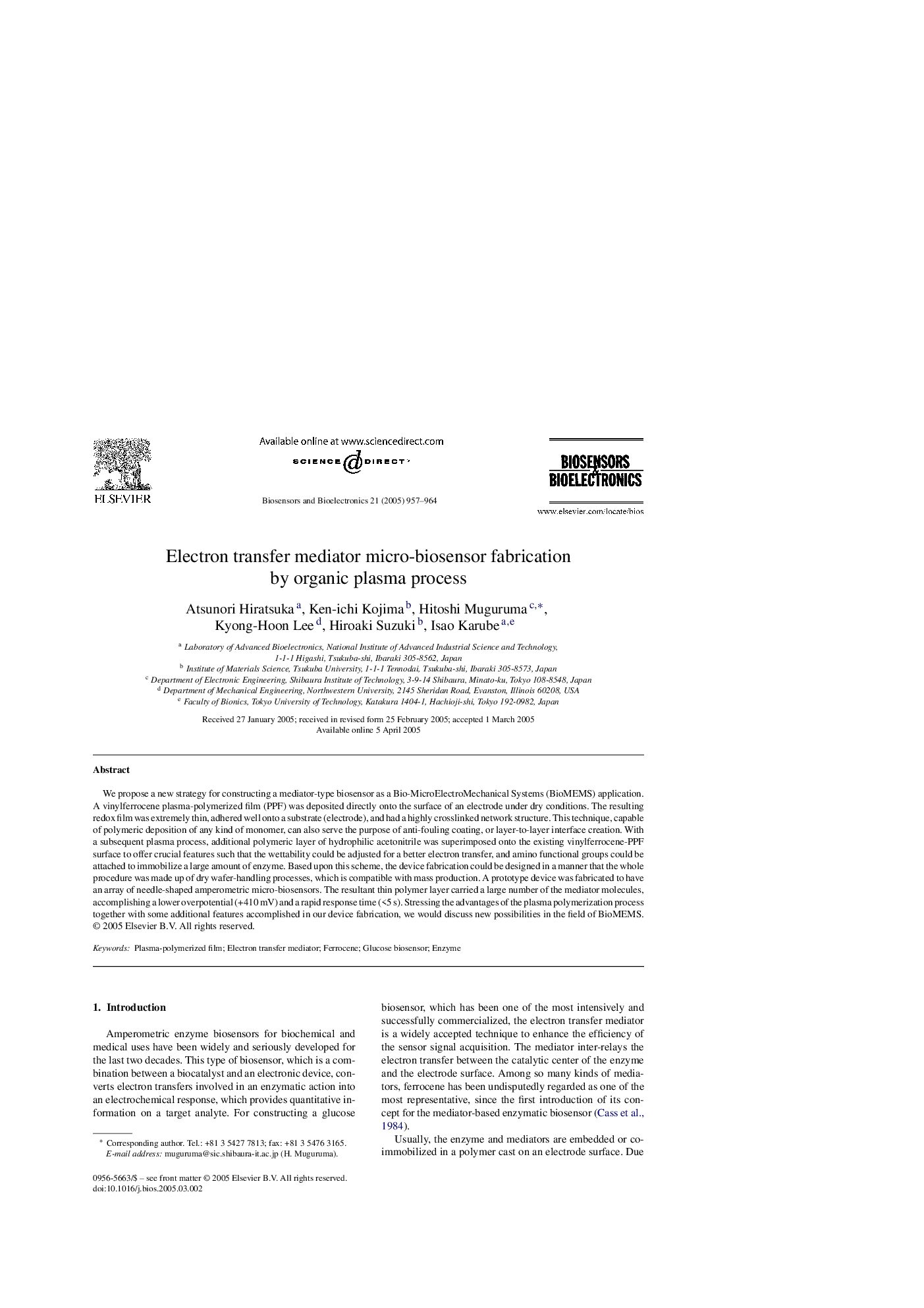| Article ID | Journal | Published Year | Pages | File Type |
|---|---|---|---|---|
| 10429580 | Biosensors and Bioelectronics | 2005 | 8 Pages |
Abstract
We propose a new strategy for constructing a mediator-type biosensor as a Bio-MicroElectroMechanical Systems (BioMEMS) application. A vinylferrocene plasma-polymerized film (PPF) was deposited directly onto the surface of an electrode under dry conditions. The resulting redox film was extremely thin, adhered well onto a substrate (electrode), and had a highly crosslinked network structure. This technique, capable of polymeric deposition of any kind of monomer, can also serve the purpose of anti-fouling coating, or layer-to-layer interface creation. With a subsequent plasma process, additional polymeric layer of hydrophilic acetonitrile was superimposed onto the existing vinylferrocene-PPF surface to offer crucial features such that the wettability could be adjusted for a better electron transfer, and amino functional groups could be attached to immobilize a large amount of enzyme. Based upon this scheme, the device fabrication could be designed in a manner that the whole procedure was made up of dry wafer-handling processes, which is compatible with mass production. A prototype device was fabricated to have an array of needle-shaped amperometric micro-biosensors. The resultant thin polymer layer carried a large number of the mediator molecules, accomplishing a lower overpotential (+410Â mV) and a rapid response time (<5Â s). Stressing the advantages of the plasma polymerization process together with some additional features accomplished in our device fabrication, we would discuss new possibilities in the field of BioMEMS.
Related Topics
Physical Sciences and Engineering
Chemistry
Analytical Chemistry
Authors
Atsunori Hiratsuka, Ken-ichi Kojima, Hitoshi Muguruma, Kyong-Hoon Lee, Hiroaki Suzuki, Isao Karube,
